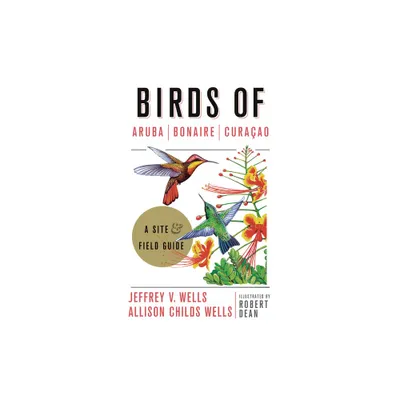Home
Birds of Aruba, Bonaire, and Curacao: A Site Field Guide
Loading Inventory...
Barnes and Noble
Birds of Aruba, Bonaire, and Curacao: A Site Field Guide
Current price: $39.95


Barnes and Noble
Birds of Aruba, Bonaire, and Curacao: A Site Field Guide
Current price: $39.95
Loading Inventory...
Size: Paperback
*Product Information may vary - to confirm product availability, pricing, and additional information please contact Barnes and Noble
Birds of Aruba, Bonaire, and Curaçao
is the essential guide for anyone traveling to those islands. It showcases the more than 280 species seen on Aruba, Bonaire, and Curaçao and provides descriptions of and directions to the best places to bird, from the famous white sand beaches to hidden watering holes to the majestic national parks.
Aruba, Bonaire, and Curaçao—the "ABCs"—located in the southwestern Caribbean, not far from Venezuela, share fascinating ecological features with the West Indies as well as the South American mainland, making birding on the islands unique. The identification portion of the book features endemic subspecies such as the Brown-throated Parakeet; a wide variety of wintering North American migrants; spectacular restricted-range northern South American species such as the Yellow-shouldered Parrot, Bare-eyed Pigeon, Troupial, Ruby-topaz Hummingbird, and Yellow Oriole; and West Indian species including the Pearly-eyed Thrasher and Caribbean Elaenia.
Colorful introductory sections provide readers with a brief natural history of the islands, detailing the geography, geology, and general ecology of each. In the site guide that follows, Jeffrey V. Wells and Allison Childs Wells share their more than two decades of experience in the region, providing directions to the best birding spots.
Clear, easy-to-read maps accompany each site description, along with notes about the species that birders are likely to find.
The identification section is arranged in classic field guide format and offers vivid descriptions of each bird, along with tips on how to identify them by sight and sound. The accounts also include current status and seasonality, if relevant, and common names in English, Dutch, and Papiamento, often inspired by the unique voices of the birds, such as the "chibichibi" (Bananaquit) and "choco" (Burrowing Owl). The accompanying color plates feature the beautiful work of illustrator Robert Dean.
The final section, on conservation, raises awareness about threats facing the birds and the habitats on which they rely and summarizes conservation initiatives and needs, offering recommendations for each island.
is the essential guide for anyone traveling to those islands. It showcases the more than 280 species seen on Aruba, Bonaire, and Curaçao and provides descriptions of and directions to the best places to bird, from the famous white sand beaches to hidden watering holes to the majestic national parks.
Aruba, Bonaire, and Curaçao—the "ABCs"—located in the southwestern Caribbean, not far from Venezuela, share fascinating ecological features with the West Indies as well as the South American mainland, making birding on the islands unique. The identification portion of the book features endemic subspecies such as the Brown-throated Parakeet; a wide variety of wintering North American migrants; spectacular restricted-range northern South American species such as the Yellow-shouldered Parrot, Bare-eyed Pigeon, Troupial, Ruby-topaz Hummingbird, and Yellow Oriole; and West Indian species including the Pearly-eyed Thrasher and Caribbean Elaenia.
Colorful introductory sections provide readers with a brief natural history of the islands, detailing the geography, geology, and general ecology of each. In the site guide that follows, Jeffrey V. Wells and Allison Childs Wells share their more than two decades of experience in the region, providing directions to the best birding spots.
Clear, easy-to-read maps accompany each site description, along with notes about the species that birders are likely to find.
The identification section is arranged in classic field guide format and offers vivid descriptions of each bird, along with tips on how to identify them by sight and sound. The accounts also include current status and seasonality, if relevant, and common names in English, Dutch, and Papiamento, often inspired by the unique voices of the birds, such as the "chibichibi" (Bananaquit) and "choco" (Burrowing Owl). The accompanying color plates feature the beautiful work of illustrator Robert Dean.
The final section, on conservation, raises awareness about threats facing the birds and the habitats on which they rely and summarizes conservation initiatives and needs, offering recommendations for each island.


















